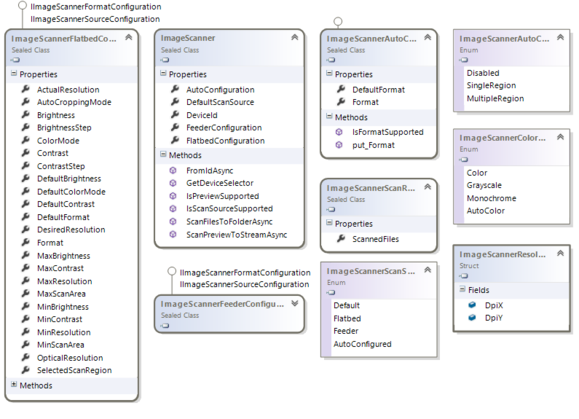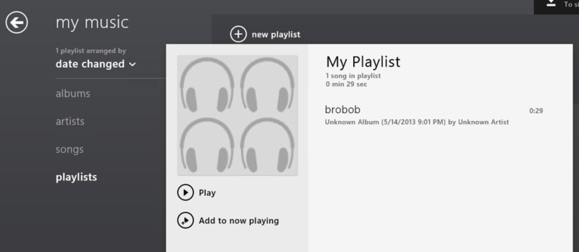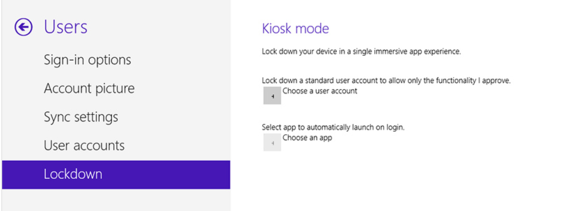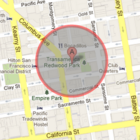Windows Blue hides 4K display support, tons of new features, developer says
For all the controversy surrounding Windows 8, it's a solid OS under the hood. And based on a list of API clues discovered by a former Nokia and Silverlight developer, it should only get better with the Windows Blue update.
Based on an extensive examination of the software APIs found within Windows Blue (now offically called Windows 8.1 by Microsoft), developer Justin Angel compiled a lengthy list of more than 25 features that he says will be included in the updated OS: the possibility of ultra-HD "4K" screen support, lock-screen calls, HDR photo support, better multi-screen formatting, and much more.
Angel teased out the new features by examining the APIs he found in the leaked build of Windows 8.1 (version 9385), which appeared online at the beginning of May. Other Microsoft watchers have installed and played around with the leaked OS—Paul Thurrott published a thorough examination of its forward-facing features—but Angel's API deep-dive reveals even more hidden secrets.
Microsoft representatives declined to comment on what they called rumors and speculation. Angel is no stranger to diving deep into Microsoft products. Last December, he made news when he discovered a method to pirate Windows Store downloads by turning trial versions into full-version apps.
Assuming Angel's latest findings bear out, the new APIs reveal a number of undisclosed capabilities in Windows 8.1, which is expected to be officially unveiled at Microsoft's BUILD conference in San Francisco. The developer release, expected on June 26, will include changes based on customer feedback, including the possible return of the Start button from Windows 7 (though Angel's API analysis doesn't confirm that detail).
It should be noted that Angel confined his examination to Windows 8.1 RT, and not the more conventional Windows 8.1. Windows RT, of course, hasn't had the warmest of welcomes.
The sexy stuff: cameras, resolutions, and lock screens
Microsoft has already said that it will support high-resolution screens with Windows 8, to the point that Windows hardware could support screen resolutions exceeding the "retina" displays found in Macintosh products. Angel's investigation would seem to confirm this, finding support for 225 percent scaling, far exceeding the 180 percent scaling found in Windows 8. In essence, pixel densities for Windows hardware could jump from 240 DPI to 300 DPI.
"It’s possible we’ll see Win8.1 WinRT tablets sporting screens with much higher DPI then Apple’s retina even going all the way up to '4k' resolution," Angel wrote on his blog,justinangel.net.
And if developers want that content projected on a second screen, with a different view, they can do so via the new ProjectionManager class.
"Imagine watching a video on your Win8 Atom-based tablet and plugging it into your TV," Angel wrote. "The tablet could duplicate the content on the TV, but it can’t choose to show one view for the TV and another view for the tablet screen. That for example is the experience for the Netflix iPad app. In Windows 8 Metro apps were spectacularly single screened and only had one single active view. It seems that in Windows 8.1 developers can opt-in to create additional alternate views for projection displays."
As has been previously revealed, apps can now set the lock screen background image. But while the Windows RT device is locked, Angel said, Windows 8.1 users should also be able to at least respond to incoming Skype calls from the lock screen, without having to input a password, unlock the PC, and accept the call. The LockScreenCallActivatedEventArgs API class should also display information about the call.
Although not everyone wants to take pictures with his tablet (does anyone?), the new 8.1 APIs support low-lag picture-taking, which, as Angel notes, could be used for two things. First, a low-lag camera could be used to eliminate shutter delay—the time between when the shutter button is clicked and when the picture is actually recorded. Second, the low-lag feature could be used to take a few, quick shots that could be stitched together. Shooting a few shots at different exposures and then digitally combining them is the basis for high-dynamic-range (HDR) photography, which Windows 8.1 could support.
Metro apps will also now be able to read and write to the camera roll, saved pictures and playlists, Angel wrote.
Support for new devices
Scanners might not be the sexiest of devices, but they were a hole in Windows 8's vaunted driver support. In general, drivers tend to be provided by the manufacturer themselves, not built inside the OS. But that should change with the release of Windows 8.1. Using the new Windows.Devices.Scanners namespace, apps can automate scanning and customizing documents from flatbed and feeder scanners, Angel wrote.
Enterprise users should also benefit from the additional support of smart cards, used for both mobile payment systems and for identification purposes. Windows 8.1 even supports the destruction of those cards. (Don't lose your PIN!) The new OS also includes an API called ClaimedBarcodeScanner.DataRecieved, which Angel says will allow support for both magnetic-stripe readers and barcode scanners.
The Windows 8.1 APIs also now indicate support for both Bluetooth 4.0 as well as Bluetooth Low Energy devices. Angel found support for both the RfComm bluetooth protocol and GATT Bluetooth profile, which are the core of Bluetooth 4.0 support.
Finally, Angel says that Windows 8.1 will support "any" USB or IO device.
"One of the big limitations of Win8 WinRT apps is their lack of ability to interact with connected and built-in devices unless previously exposed by WinRT," Angel writes. "It seems that’s about to change in Windows 8.1 with the introduction of the new Windows.Devices.Usb and Windows.Devices.Custom namespaces. Both of these namespace provide IOutputStream and IInputStream to any USB or IO device. It’s fair to assume it’ll be heavily gated by permissions, but it’s still a great feature that opens up new avenues for Win8.1 apps."
General utilities (hello, search!) and other improvements
You know the Search charm within Windows 8? Congratulations, you're one of the few. But Angel found support for an inline SearchBox control—which, as the name suggests, now supports in-app searching. This means that developers won't necessarily have to force users to use the charm to actually search, but can add a more familiar search box instead.
In general, Metro apps stutter and sometimes stop when a VPN is introduced. Angel's sleuthing reports that will come to an end with Windows 8.1.
And although alternative PDF viewer apps are fairly common within the Windows Store, virtually none take place within the Metro environment. That should change with Blue, which now includes support for all apps to render PDF documents.
Windows 8.1 will also support "geofencing," or the ability to launch an app when the user enters (or, presumably leaves) a designated area. For example, an app could alert a user if his Windows tablet is stolen. Apps just need to set a center point and a radius.
Apps will also be to add appointments to the general Windows calendar via the new AppointmentsProvider, a feature that probably should have been included with the RTM release of Windows 8. Local text-to-speech is now enabled, too.
Angel also discovered a number of other, less important features in his lengthy runthrough.
While users tend to focus on the new, revamped Start Screen and other aspects of Windows 8, some of the best aspects of the new OS lie under the hood. If Angel's discoveries are correct, and Microsoft includes them in the final version of Windows 8.1, then we'll have a better sense of the direction in which Microsoft is moving.
 JUSTIN ANGEL
JUSTIN ANGEL
 JUSTIN ANGEL
JUSTIN ANGEL JUSTIN ANGEL
JUSTIN ANGEL JUSTIN ANGEL
JUSTIN ANGEL